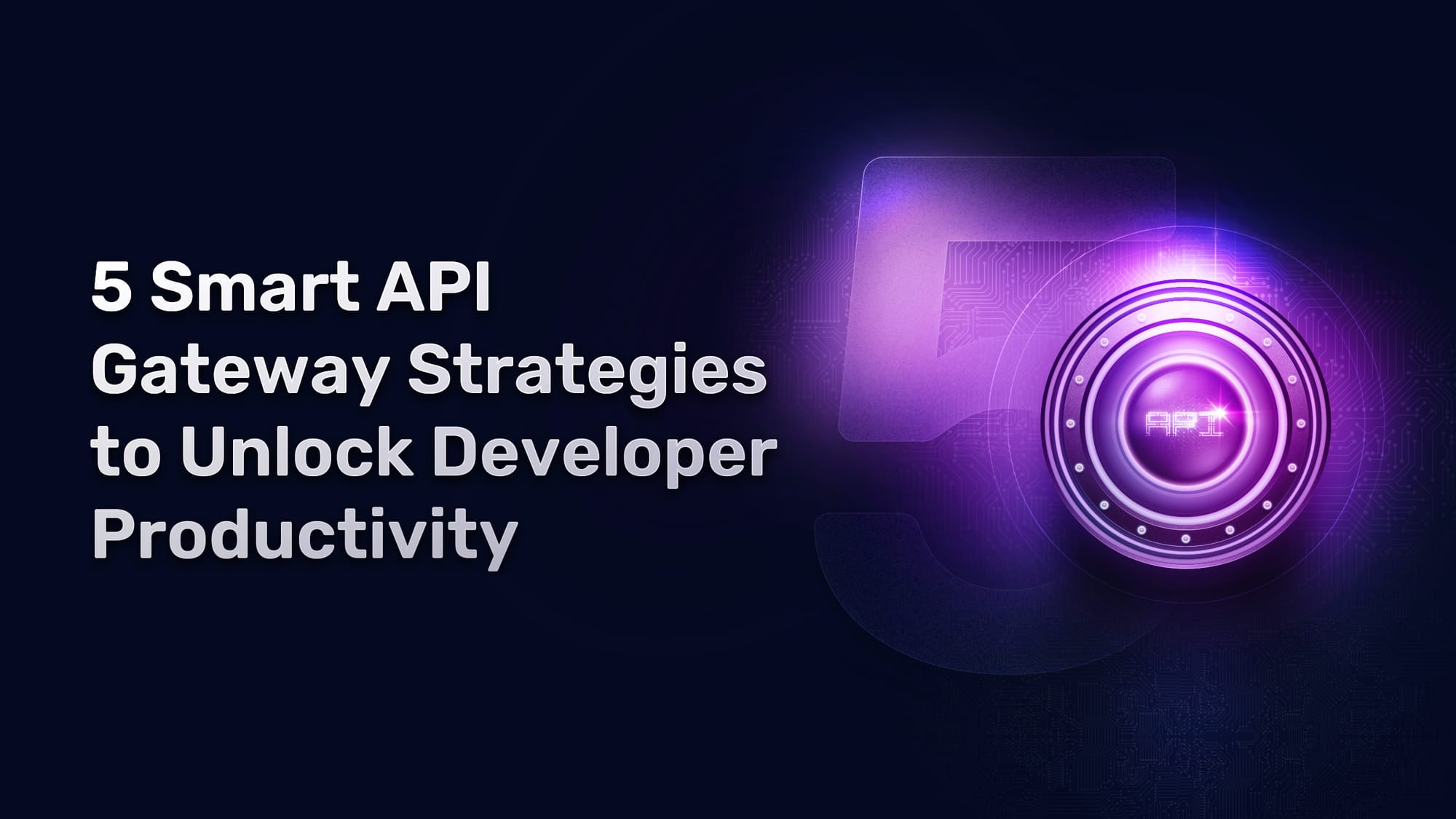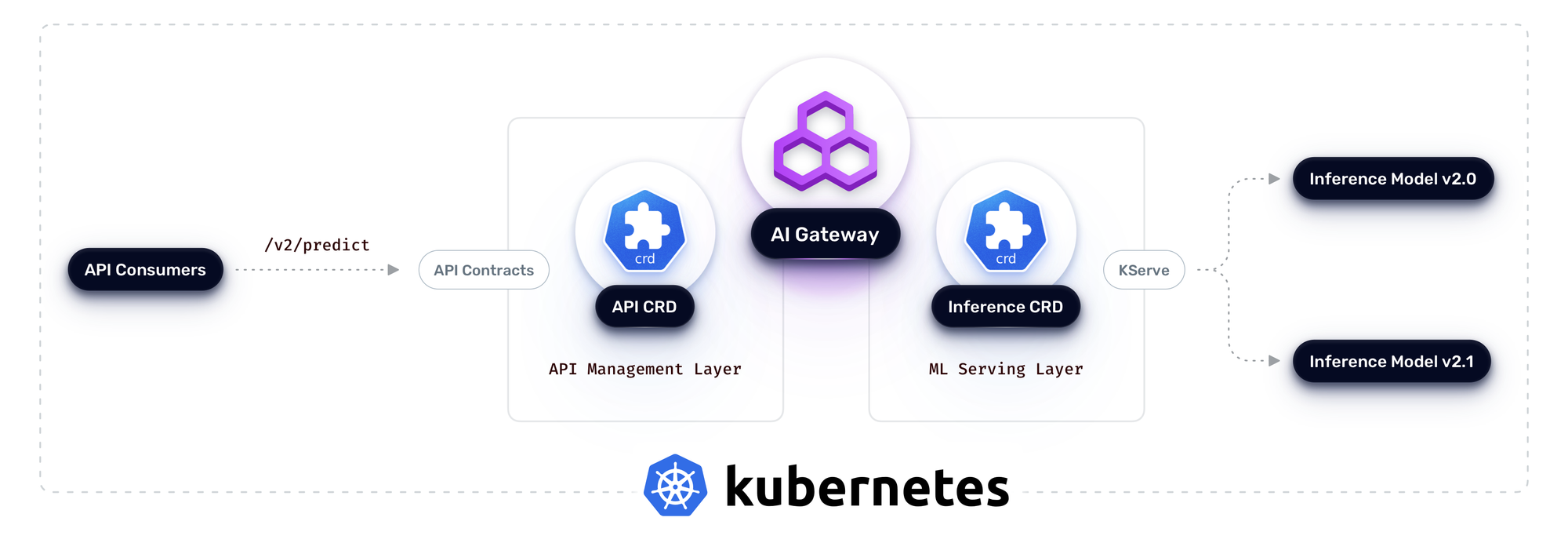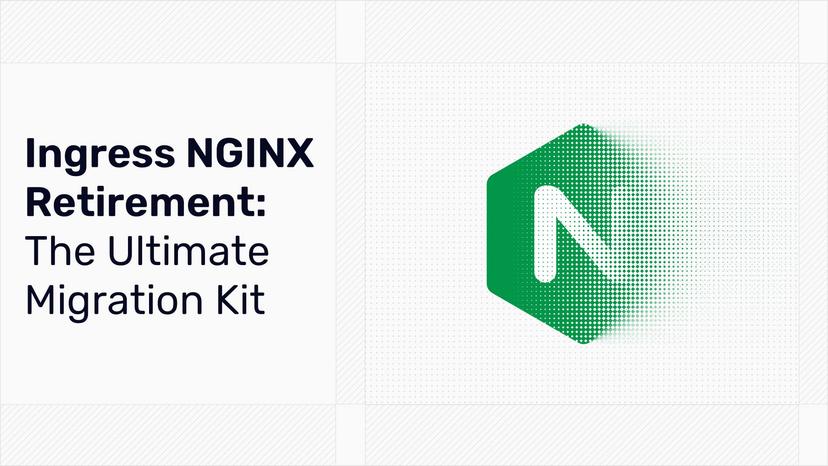5 Smart API Gateway Strategies to Unlock Developer Productivity

How forward-thinking platform teams are transforming developer experience through modern API gateway practices
Developers expect speed and autonomy—and organizations demand control and security. The API gateway sits at the heart of this balancing act. The most successful platform teams are rethinking traditional gateway models, using modern strategies to supercharge developer productivity while maintaining ironclad governance, observability, and performance. Here’s how they’re doing it.
The Hidden Cost of Undocumented Infrastructure
Before diving into our strategies, allow me to share a personal experience that many platform leaders can relate to. When taking over leadership roles at several organizations, I've encountered the substantial challenge of undocumented infrastructure at scale.
The pain of uncovering what actually exists in data centers is like navigating through the "fog of war" in a strategy game like Age of Empires—spending significant time, effort, and money just to understand what you're working with. In the game, you start with a dark, foggy world, slowly revealing the map as you move forward. But for me, this wasn't a game—it was our production data centers. Every inch of fog essentially cost us time, money, and sometimes even sleep.

I've even seen teams terrified of restarting their production gateway—not because of potential downtime, but because nobody knew what was configured there, what rules it was enforcing, or what custom configurations existed only in memory without any documentation or persistence. The entire setup was extremely fragile.
This painful experience taught me something important: we needed to stop firefighting and start thinking like a platform team. I had to build a team that could shift the mindset from reactive operations to proactive engineering.
When it comes to exposing APIs, frustration typically hits two key personas first: the API publisher who builds, owns, and exposes APIs, and the API consumer who uses these services. The gap between them requires governance that doesn't limit but empowers productivity. Here are five proven strategies that can transform your API gateway into a developer productivity powerhouse:
Strategy #1: Implement Zero-Friction API Onboarding
Reducing API integration time from days to minutes isn't just a dream—it's achievable with the right approaches. Here's a surprise, though: when we think about onboarding, we usually think about onboarding developers. But actually, the first persona to face onboarding challenges is the API publisher.
When new team members join or when onboarding a new API into API management, it often takes days, involves tickets, and relies on tribal knowledge. This is where the whole system can break down. By focusing on streamlining the publisher experience first, we create a foundation for developer productivity.
How Traefik Labs makes this possible:
- Declarative configuration that allows for version-controlled API definitions
- UI vs. Cluster ownership balance - whatever you create from the UI becomes a Custom Resource Definition (CRD) that you can manage through GitOps, making onboarding APIs repeatable and protecting configurations from accidental modification
- Managed subscriptions to automate consumer onboarding, potentially eliminating the need for consumers to log into developer portals
It's easy to focus solely on the developer experience—but the API consumer is just as critical. Whether it's a partner integrating your APIs or an internal team building on top of your services, they need instant clarity, autonomy, and confidence. Yet, too often, consumers are left waiting on documentation, meetings, or manual approvals. The real transformation happens when consumers can discover, evaluate, and subscribe to APIs without delays. By removing these bottlenecks, organizations can accelerate time-to-value for every new integration.
- Self-service API portal that includes:
- Comprehensive API specifications
- Self-service subscription options with flexible plans
- Try-out features for testing
- AI-assisted client code generation through the Alfred AI assistant
The goal is to achieve onboarding without meetings and waiting times—reducing API integration from days to minutes. This combination dramatically reduces the friction that typically slows down API integration and adoption for both publishers and consumers.
Strategy #2: Create Intelligent Observability Feedback Loops
Combining observability with your API gateway provides developers with contextual insights that dramatically reduce debugging time. Your API gateway serves as the gatekeeper of your infrastructure—securing, monitoring, and exposing APIs—making it essential to have visibility into what's happening at runtime.
Traefik Labs' approach includes:
- OpenTelemetry integration that provides metrics, traces, and logs in a unified format to the tools you're most familiar with, whether self-hosted or cloud-based SaaS offerings
- Observability-as-a-Service capabilities through our partnership with Treblle—with a simple plugin installation, you get instant insights into API behavior, compliance issues, and security problems based on observed traffic
- Response debugging tools that provide granular visibility into API behavior
The real power comes from creating feedback loops that correlate deployment events with actual output metrics, traces, and logs. When you configure everything as code, put it in Git, and apply changes through GitOps pipelines, you can quickly identify the cause of unexpected issues. For example, if you suddenly see 500 errors, you can correlate them with recent PRs, which appear as annotations on your monitoring dashboard. This allows you to revert problematic changes quickly, mitigate incidents, and save the business from costly outages.

These tools transform debugging from reactive to proactive, allowing developers to move faster while resolving incidents before they escalate. The result? Significant reductions in time to recover from outages and overall cost savings for the business.
Strategy #3: Deploy Runtime Governance That Empowers Rather Than Restricts
Runtime governance needs to shift left while still empowering developers. Although governance puts checks in place, these should provide safe guardrails within which teams can move quickly—not restrictive barriers that slow innovation.
Traefik Labs enables:
- Static analysis of your configuration in GitOps pipelines to catch configuration errors early and fix them before reaching production
- Impact analysis that shows not just what changed but who will be affected by the change—for example, determining if a rate limit or quota configuration modification will impact more users than anticipated
- Pull request workflows are enhanced with these semantic outputs that help reviewers understand both the change and its impact
- Open Policy Agent (OPA) policies on CRDs for flexible, powerful governance without requiring a separate OPA installation—it's built directly into the gateway
- OpenAPI Specification (OAS) validation to eliminate shadow and zombie APIs, which according to Treblle's latest report, account for 35% of API traffic
Traefik API Management allows you to set a flag to block every endpoint outside what's described in the OpenAPI specification. When enabled, all undocumented methods become inaccessible immediately. For legacy systems with undocumented APIs, our partnership with Treblle allows you to build OpenAPI specifications from observed traffic, transforming previously undocumented endpoints into documented ones.
# Also works with API Versions
---
apiVersion: hub.traefik.io/v1alpha1
kind: API
metadata:
name: invoice-api
spec:
openApiSpec:
path: /openapi.yaml
validateRequestMethodAndPath: true # one simple setting, much less trouble
This approach shifts governance left in the development cycle, preventing issues before they become problems while preserving developer autonomy. It's like having a Swiss army knife for governance—you're not limited to what the tool offers but have an engine you can fine-tune to create safeguards that enable developers to move faster.
Strategy #4: Tame LLMs and AI by Turning Them Into Managed APIs
As AI becomes central to development workflows, new challenges are emerging. The AI landscape is evolving at an unprecedented pace—according to Stanford University's latest study, AI is becoming more powerful each day and is being embedded into everyday life with exponential growth in areas like medical devices. Organizations are going all-in on AI, with various models available worldwide.
With AI endpoints proliferating (Hugging Face alone hosts over 1.6 million models), companies and developer teams are experimenting extensively. This creates a fundamental need for API management and governance specifically tailored to AI workloads.
Traefik Labs' AI Gateway solution includes:
- Centralized secret management that can turn any AI endpoint into a managed API—you no longer need to expose your OpenAI API key to all your mobile applications deployed to the public
- Semantic caching that recognizes when prompts express the same meaning in different natural language sentences, freeing up costly GPU cycles while dramatically improving latency and reducing costs
- Content firewalls that protect information flowing to and from AI models, with the ability to block requests/responses or mask sensitive data through a powerful rule-based system using Microsoft's open-source Presidio engine for natural language processing
Our demo shows this in action with a "Traffic Airlines Feedback Service" that uses JWT authentication, OPA middleware for authorization, and content guards to cleanse PII data flowing through the system. We also demonstrate semantic caching with our chat example, where semantically similar queries returned cached results with dramatically improved response times.
These capabilities allow organizations to harness the power of AI while maintaining control over how it's accessed and utilized—balancing innovation with responsible AI practices.
Strategy #5: Build Resilient API Ecosystems
Configuring API networks that reduce developer on-call burden and improve system reliability is essential for sustainable operations. With AI inferencing, additional challenges emerge around versioning, scalability, cost optimization, and handling sensitive data responsibly.
Traefik Labs focuses on:
- High availability configurations to ensure consistent service
- Flexible API versioning that decouples exposed API versions from model versions, allowing teams to experiment with different models without breaking client applications
- The shared responsibility model for API and ML model versioning
Traefik Hub API Management offers an exceptionally flexible versioning system that can match on host, HTTP method, query parameters, headers, IP, authenticated user, and many other request attributes. This puts power in your hands to manage the lifecycle of APIs and AI workloads with less chaos and fewer incidents.
For example, your API might expose a "/v2" endpoint while the model running behind it could be at version 2.2 or 2.3. This decoupling allows you to experiment with and improve models without disrupting clients. With contracts and versioning present as code, you provide a consistent view to clients while enabling experimentation within your organization.

This approach creates resilient systems that can evolve while maintaining compatibility and reducing maintenance overhead—essential for managing both traditional APIs and increasingly important AI workloads.
Putting It All Together: From Theory to Practice
These strategies aren't just theoretical, they represent practical approaches that forward-thinking organizations can implement today. Traefik Labs demonstrates a complete infrastructure-as-code environment with Terraform, deploying a K3d cluster with Argo CD, Traefik, KServe for AI inferencing, and various other tools—all fully configurable through GitOps workflows.
We demo two key services:
- A Traefik Airlines Feedback Service that uses JWT middleware, OPA policies, and content guards to provide secure, compliant AI-powered sentiment analysis
- A Chat Service that implemented semantic caching to dramatically improve performance and reduce costs when handling similar queries
Unlocking What’s Next: Developer Productivity Starts at the Gateway
By transforming your API gateway from a simple traffic management solution into a comprehensive platform for developer productivity, you can accelerate innovation while maintaining the control and visibility your organization needs.
Whether you're managing a handful of APIs or thousands, or working to integrate AI capabilities responsibly into your applications, these strategies can help you create a more productive, secure, and resilient API ecosystem that drives business value.
Ready to unlock developer productivity through your API gateway? Learn more about how Traefik Labs can help transform your approach to API management and developer experience in 2025 and beyond.
In This Article
- The Hidden Cost of Undocumented Infrastructure
- Strategy #1: Implement Zero-Friction API Onboarding
- Strategy #2: Create Intelligent Observability Feedback Loops
- Strategy #3: Deploy Runtime Governance That Empowers Rather Than Restricts
- Strategy #4: Tame LLMs and AI by Turning Them Into Managed APIs
- Strategy #5: Build Resilient API Ecosystems
- Putting It All Together: From Theory to Practice
- Unlocking What’s Next: Developer Productivity Starts at the Gateway




